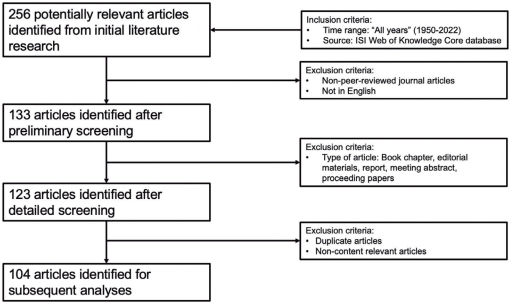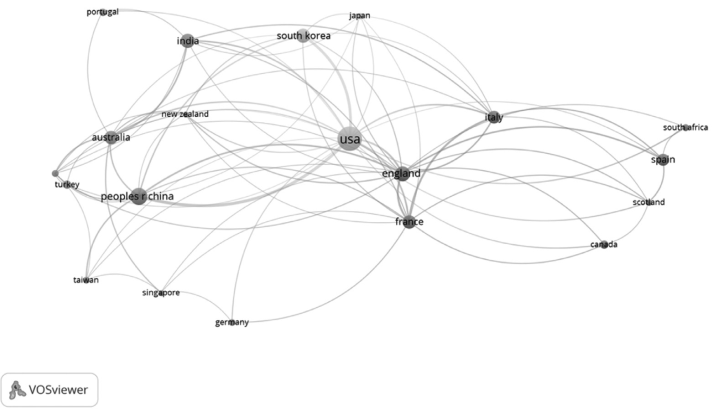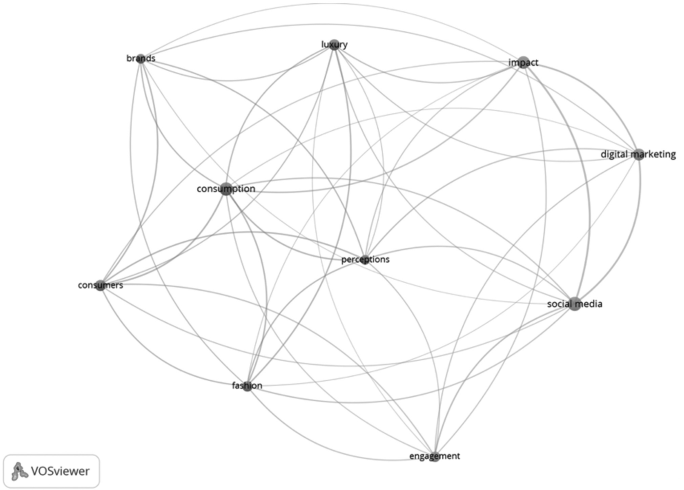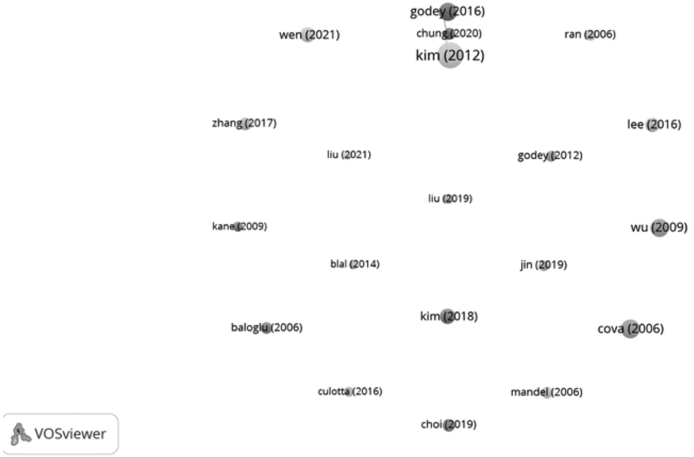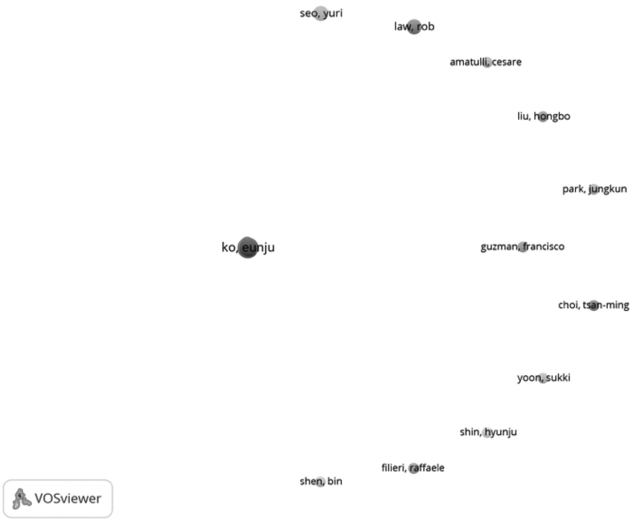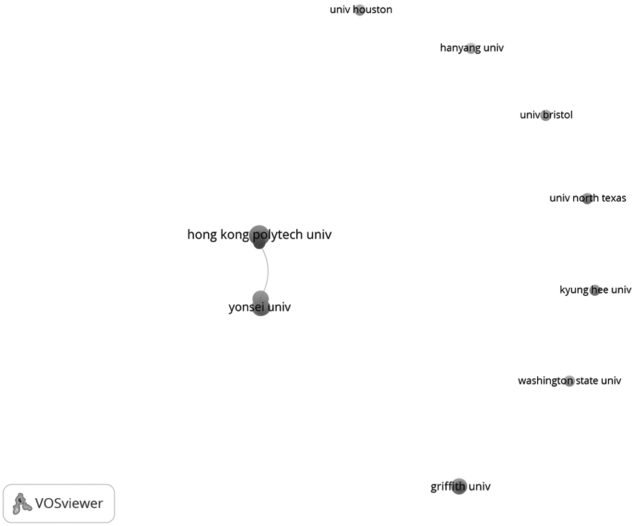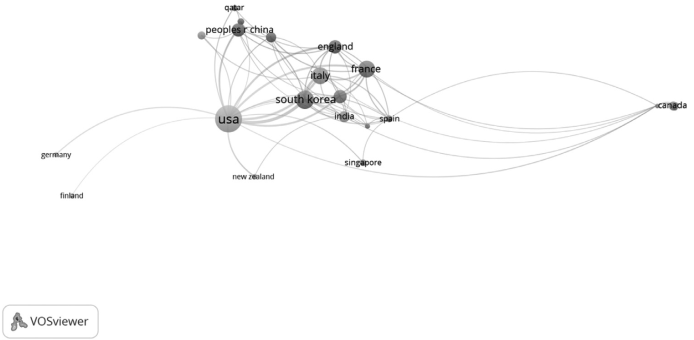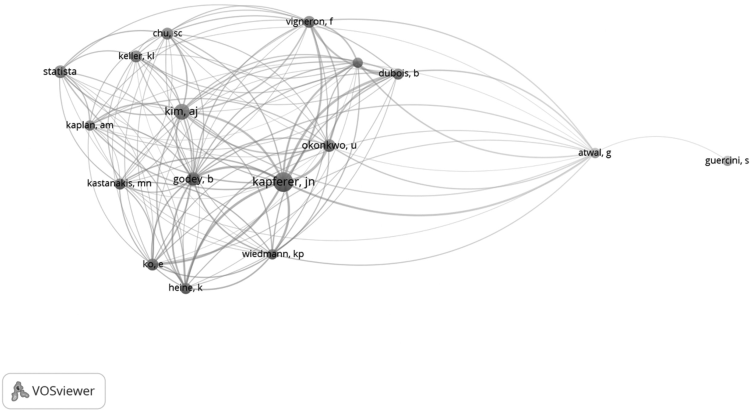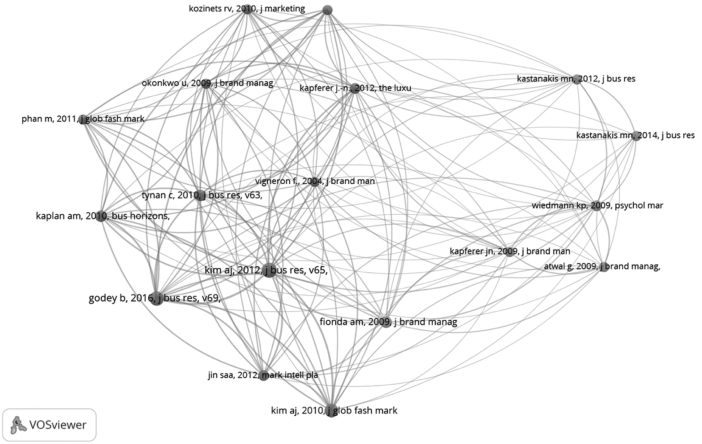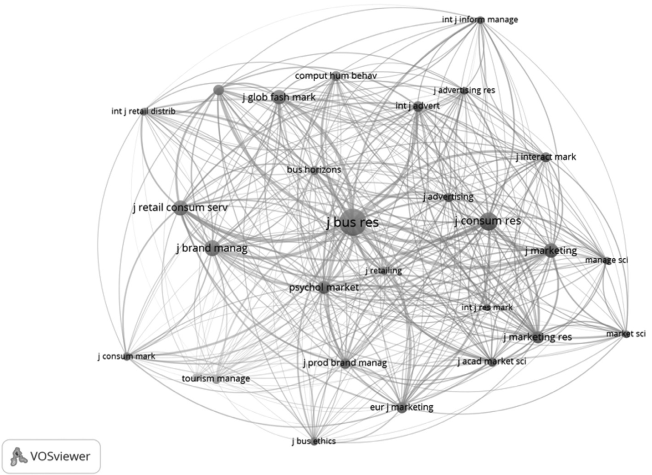1. Introduction
With the disruption caused by COVID-19 to global markets, the adoption of the digital revolution in the luxury sector has accelerated for both companies and scholars. According to Deloitte (2020), online retailing shows a significant increase during the first two seasons and reaches a peak in April 2020 of 209%, globally compared to the previous year. Obviously, a beautifully designed shopping website or effective banner ads are not sufficient for digital marketing of luxury brands (Dauriz et al., 2014), and a Luxury 4.0 model has been prompted to increase the digitization speed and agility of luxury businesses that make it possible to respond rapidly to shifts in demand and customer needs (Achille et al., 2018). For example, for the very first time, luxury brands increasingly teamed up with e-commerce platform giants like Alibaba Tmao and Amazon to sell their products online (Deloitte, 2020). Nowadays, a “right digital strategy” differs for every luxury brand, including a high level of mobile presence, targeted use of social media to engage and influence customers, and considerable attention paid to rigorous digital performance metrics (Dauriz et al., 2014). More and more digital platforms, devices, and advanced technologies such as virtual reality (VR), augmented reality (AR), and artificial intelligence (AI) promise significant transformation of customer needs and fuel opportunities for luxury marketing in the future (Chandon et al., 2016; Holmqvist et al., 2020; Jung et al., 2021).
There’s no doubt that the marketing of luxury goods has become increasingly complex, and was initially slow to adapt to the digital revolution by considering the heritage and exclusivity character of the luxury industry (Kapferer, 2012) and by considering the multifaceted nature of luxury (Gurzki & Woisetschläger, 2017). In addition, recent studies find it harder than before to deliver luxury service and experience through digital tools while simultaneously meeting different expectations for customers in a digital environment (Wirtz et al., 2020). A decade ago, scholars had already begun to study the challenges of luxury in the digital context and explore how luxury brands optimize their online presence (Okonkwo, 2010) and social media marketing (Kim & Ko, 2010). Even though luxury marketing has attracted a wide range of multidisciplinary studies, few have kept pace with the evolution of advanced digital technologies in luxury marketing. For instance, the bibliometric analysis by Gurzki and Woisetschläger (2017) and the literature review by Ko et al. (2019) outline an overview of the extant luxury literature regarding mapping luxury research landscape and a new definition of the luxury brand. A recent conceptual study by Holmqvist et al. (2020) builds propositions through literature reviews and empirical insights on digitization to extant luxury research, while mainly focusing on luxury services encounters. Against this backdrop, this review intends to identify key articles and the most influential scholars in the field in order to analyze emerging constructs and themes from prior studies and to complement related research with a systematic review of interdisciplinary topics.
2. Bibliometric citation analysis
2.1 Data collection
This paper employs data from the ISI Web of Knowledge database, where researchers can conduct a thorough citation search. Web of Science (WoS) is a subscription-based database that provides a scientific citation indexing service by searching term(s), journal(s), or both search term(s) and journal(s). As a basis, it enables a thorough investigation of academic works towards specific sub-fields (for example, Feng et al., 2021; Gurzki & Woisetschläger, 2017). Additionally, its diverse data formats enable effortless processing and analysis of data with bibliometric software, providing greater efficiency and robustness. For instance, unlike some scholars who utilize multiple databases (e.g. Cavalcante et al., 2021), we opt to make use of a single database that is sufficient for our analysis. This approach minimizes the risk of manual errors and eliminates unnecessary actions, ultimately leading to a more streamlined and efficient analysis process (Donthu et al., 2021). “All years” in the WoS search covers publication dates between 1950 and 2022, and it also allows the year(s) or period(s) to be customized for different research goals. Following this search strategy, 104 journal articles were retrieved (see Figure 1). Publications from 14 different research areas are included in the sample, which is categorized by the ISI Web of Knowledge. Business & Economics (39 publications), Communication (9), Social Sciences Other Topics (6), Environmental Sciences Ecology (4), Geography (4), Arts Humanities Other Topics (3), Information Science Library Science (3), Psychology (3), and Art (2) are the research areas with the most publications relating to digital marketing in the luxury research (see Figure 2). Accordingly, we consider the WoS results to cover sufficient publications related to luxury digital marketing.
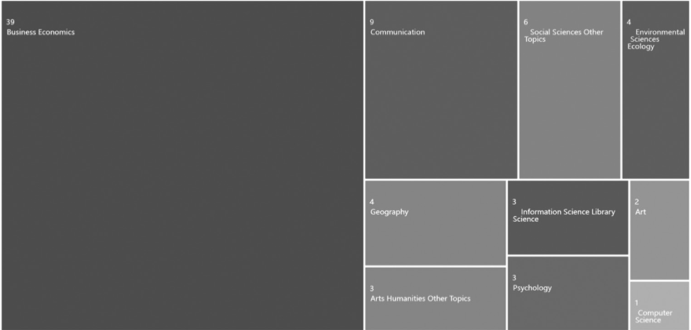
Source: elaboration by the author.
Figure 2 Classification of Research Areas by selected publications.
For these various disciplines of the luxury sphere, a broad search approach that optimizes coverage of pertinent publications is essential (Gurzki & Woisetschläger, 2017). The sample consists of publications between 2016 and 2022 (see Figure 2) that use the keywords “digital marketing” and “luxury” in the ISI Web of Knowledge Core collection (data retrieved October 21, 2022). In addition, Table 1 lists the top ten most cited articles on Digital marketing in luxury research (see Table 1). Chung et al. (2020), published in the Journal of Business Research was the most cited paper, while the top three most cited papers were all published in Journal of Business Research, demonstrating that Journal of Business Research is the most influential journal on this topic.
In Figure 3, the number of papers on digital marketing in luxury journals has steadily increased since 2016, and we notice a particular acceleration in both 2019 and 2021, while in recent years, only 2020 is likely to be reduced, due to the COVID-19 pandemic impact (see Figure 3).
2.2 Method and tools used
Bibliometric analysis is an effective method for evaluating large quantities of bibliometric data to uncover emerging trends, identify areas for further exploration, prioritize research goals, and promote collaboration among scholars from different disciplines. VOSViewer was used in this study, which is free to download, constantly updated, and easy to construct maps in full detail based on bibliographic data connected by co-authorship, co-occurrence, citation, bibliographic coupling, or co-citation links (Van Eck & Waltman, 2022). The bibliometric software enables the citation analysis in a fairly pragmatic way (Donthu et al., 2021), which is increasingly accepted in academic literature in recent years, such as marketing research (e.g. Backhaus et al., 2011; Cavalcante et al., 2021; Donthu et al., 2020; Feng et al., 2021). It can be seen that the combination of bibliometric analysis and literature review enables this study to mitigate the limitations of traditional literature review (e.g. interpretation bias) and to obtain insightful findings.
Table 1 Top ten most cited articles on digital marketing in luxury research
| Authors | Title | Year | Journal | Citations |
|---|---|---|---|---|
| Kim & Ko | Do social media marketing activities enhance customer equity? An empirical study of luxury fashion brand | 2012 | Journal of Business Research | 771 |
| Cova & Pace | Brand community of convenience products: new forms of customer empowerment - the case “my Nutella The Community” | 2006 | European journal of marketing | 422 |
| Wu & Liang | Effect of experiential value on customer satisfaction with service encounters in luxury-hotel restaurants | 2009 | International Journal of Hospitality Management | 363 |
| Godey et al. | Social media marketing efforts of luxury brands: Influence on brand equity and consumer behavior | 2016 | Journal of Business Research | 353 |
| Wen et al. | Covid-19: potential effects on Chinese citizens’ lifestyle and travel. | 2020 | Tourism Review | 284 |
| Kim & Laskowski | Toward an ontology-driven blockchain design for supply-chain provenance. Intelligent Systems in Accounting | 2018 | Finance and Management | 271 |
| Lee & Watkins | YouTube vloggers’ influence on consumer luxury brand perceptions and intentions | 2016 | Journal of Business Research | 247 |
| Choi | Blockchain-technology-supported platforms for diamond authentication and certification in luxury supply chains | 2019 | Transportation Research Part E: Logistics and Transportation Review | 178 |
| Zhang & Nguyen | Magnetic digital microfluidics-a review | 2017 | Lab on a Chip | 177 |
| Chung et al. | Chatbot e-service and customer satisfaction regarding luxury brands | 2020 | Journal of Business Research | 164 |
| Baloglu & Pekcan | The website design and Internet site marketing practices of upscale and luxury hotels in Turkey | 2006 | Tourism management | 163 |
Source: elaboration by the author.
3. Findings and analysis
In this section, we will present four types of analysis, namely, co-authorship analysis, co-occurrence analysis, citation analysis, and co-citation analysis, together with the VOSViewer visualizations maps.
3.1 Co-authorship analysis
Co-authorship analysis shows the social interactions or relationships among authors and their affiliations (institutions, countries), as well as how these relationships have impacted the development of research disciplines (Donthu et al., 2021; Van Eck & Waltman, 2022). There are 1464 authors who have publications in our database. We only consider authors who have three publications with 30 citations in order to create an insightful co-authorship network map. Thirty authors are able to meet this threshold, with Ko Eunju (10 papers) being the most productive author. The co-authorship map provided by VOSViewer for the 30 authors is displayed in Figure 4, which implies that the landscape of authors undertaking digital marketing research in the luxury sector is decentralized (see Figure 4). Therefore, future studies offer plenty of options for scholars from different backgrounds to join the numerous existing clusters.
According to the organization, the field of luxury research has published papers on digital marketing topics by authors from 807 organizations. Only institutions with more than five publications with a minimum citation of 50 were considered, and 18 universities met this criterion. Hong Kong Polytech University (17 publications), Yonsei University (13 publications), and University of Florence (11 publications) are the top three most productive institutions (see Figure 5).
In assessing the extent of international cooperation, we also consider which countries are working together to publish papers on digital marketing in luxury research. Only 20 countries reach the threshold of a minimum of 10 publications and 50 citations, despite the fact that academics from 69 countries have published works in this specific field. As shown in Figure 6, the USA clearly leads this field, producing 145 publications, with China (70 publications), the UK (56 publications), and India (52) following. These top four co-authorship countries also lead four different clusters (see Figure 6).
3.2 Co-occurrence analysis
Co-occurrence analysis presents the most frequently used terms and their relationships, as well as the key clusters and scholars’ shared interests, to map research trends and current themes in the research field (Donthu et al., 2021; Van Eck & Waltman, 2022). Figure 7 shows the top 10 keywords that are frequently used in selected papers, each of which has at least eight occurrences, indicating that they are strongly related to one another. The keywords with the most occurrences are “social media” (16 occurrences), followed by “consumption” (15 occurrences), “impact” (13 occurrences), “digital marketing” (12 occurrences), and “consumers” (11 occurrences). Furthermore, the two-colored clusters show that “social media” and “engagement” have a strong link in previous studies on digital marketing in luxury research. Therefore, we suggest that new research avenues regarding digital marketing in luxury sector could draw on advanced digital technologies or platforms rather than mature concepts (i.e. social media) that have already been studied sufficiently in prior studies (see Figure 7).
3.3 Citation analysis
Citation refers to an analysis of the relationships among publications and the identification of the most influential publications in the topic-related disciplines for further detailed investigations (Donthu et al., 2021; Van Eck & Waltman, 2022). We chose publications that have at least 100 citations, and 20 of the 598 articles we chose fit this criterion, ensuring that we don’t include studies with little impact. The article by Kim & Ko (2012) has the most citations in our data set (771 citations) (see Table 1 & Figure 8), which is closely linked to the second and third most cited articles by Cova & Pace (2006) (422 citations) and Wu & Liang (2009) (363 citations). Only Kim & Ko (2012), Godey et al. (2016), and Chung et al. (2020) are connected closely in the map that emphasizes digital marketing efforts (e.g. social media, AI chatbots) in luxury brands and customer relationship management. We can see the trend in this topic move from the focus on brand equity or customer equity of digital marketing efforts to improving the customer experience of digital services in luxury brand management.
Figure 9 shows the most prolific author on this topic, Ko Eunju, who has 1103 citations with 10 publications, followed by Aiello Gaetano (551 citations with five publications) and Godey Bruno (503 citations with three publications). In this network, we set a minimum publication of three and a minimum citation of 50 times per author. Only 20 among the 1464 authors met this threshold. This result illustrates that Ko Eunju is the key author in the largest cluster, which focuses on the social media marketing efforts of luxury brands. The top four most cited authors are also the authors of the most cited paper, “Chatbot e-service and customer satisfaction regarding luxury brands,” which they co-authored (see Figure 9).
Next, we evaluated the connections between different institutions (807). The 18 universities shown on the map in Figure 10 are the outcome of our requirement that each university ought to have five or more articles and receive 50 or more citations. We can see that each cluster is both very scattered and not very concentrated. Meanwhile, the top three cited institutions are closely connected: University of Florence, with 617 citations of 11 publications, Hong Kong Polytech University, with 479 citations of 17 publications (which is the most productive organization), and Yonsei University, with 352 citations of 13 publications (see Figure 10).
In terms of citation analysis by countries, we set at least five papers and 100 citations of an author, with the result that 24 out of 69 countries met the threshold. Figure 11 only shows 22 connected items, instead of 24 items. USA has the most citations (3972 times) and most papers (145), followed by South Korea (1866 times with 48 papers), France (1532 times with 43 papers), and is the most productive followed by China (902 times with 70 papers), and Australia (905 times with 56 papers) (see Figure 11).
In Figure 12, we require five publications and 100 citations per source; there are 14 that meet the thresholds of 277 sources. Obviously, Journal of Business Research (JBR) has been the leading role in this topic, which includes 37 publications with 2601 citations. International Journal of Hospitality Management and European Journal of Marketing are the second and third most cited sources, at 578 and 463 times with 12 and seven publications relating to this topic respectively. Journal of Fashion Marketing and Management (24 papers) and Sustainability (19) are the second and third most productive journals that draw significant attention to this field (see Figure 12).
3.4 Co-citation analysis
Co-citation analysis examines how frequently publications, authors, institutions, and journals are cited together, with the co-citation network presenting their relationships to identify research streams and foundational themes further (Donthu et al., 2021; Van Eck & Waltman, 2022). VOSViewer provided 4413 cited references in total, while only 18 were retained since we specified that a reference must be cited at least six times. As shown in Figure 13, among the 18 retained articles, Kim & Ko (2012, 14 citations) (2010, 11 citations) and Godey et al. (2016) (12) are the top three papers with the most citations, and more interestingly, their topics all focus on social media marketing influence in luxury brands (e.g. customer equity, brand equity and consumer behavior, customer relationship and purchase intention). Moreover, the publications in the other cluster are all connected by Kim & Ko (2012) and Godey et al. (2016) (see Figure 13).
Then, we further took into account the 3468 authors who are cited collectively in the referenced publications in our sample. Each author had to be cited at least 10 times in order for the co-citation analysis by authors to be valid, and 17 authors satisfied the condition. The top three most cited authors are Kapferer (2012; 37 times), Kim & Ko (2012; 25 times), and Godey et al. (2016; 17 times). Although Milanesi et al. (2012) is not particularly strong related to most of the network, which is shown on Figure 14, his work regarding the digital luxury experience is connected to the discussion of digital marketing in luxury research topics by being co-cited with Atwal & Williams (2017) (see Figure 14).
Last, we performed a co-citation analysis on the papers in our sample from the 2263 journals. There are 28 journals that have received at least 20 citations (see Figure 15).
The network map in Figure 15 indicates that the top three most cited journals are Journal of Business Research (288), Journal of Consumer Research (131), and Journal of Brand Management (100). In addition, Journal of Business Research (8960) and Journal of Consumer Research (3455) are also the top two in total link strength, which measures how frequently one item is linked to other items (Van Eck & Waltman, 2022). It should be noted that the total strength of Journal of Retailing and Consumer Services is 3116, which is higher than Journal of Brand Management (2219). Last but not least, our data set extensively cites important tourism journals and non-marketing journals, such as International Journal of Hospitality Management, Tourism Management, Computers in Human Behavior, and Lab on a Chip (see Figure 15).
4. Conclusion
To sum up, we have observed a noticeable increase in academic publications discussing the intersection of “digital” and “luxury” within the field of marketing. Notably, there was a significant surge in publications during the years 2016 and 2021 (see Figure 3). It is possible that this trend can be attributed to the growing influence of social media marketing around 2016, which may have impacted emerging keywords in co-occurrence analysis (see Figure 7) and influential articles (see Table 1); and increased compensatory consumption or revenge spending following the pandemic quarantine may have accelerated this trend in 2021 (see Figure 15). In addition, both co-authorship and citation analysis illustrates that authors from the USA and South Korea are the most representative and influential in this research area (see Figure 6 and Figure 11). Authors from Asian institutions such as Hong Kong Polytech University and Yonsei University have more productive scholars published papers regarding this topic (see Figure 5 and Figure 10). While the network of authors, organizations, and journals is still very scattered, we suggest that various research gaps and new research possibilities remain on the topic. It is important to acknowledge that while there are several academic journals that contain highly cited papers on this subject, JBR stands out as the leader in impactful research on the topic. This is evident from both Figure 12 and Figure 15. Following by International Journal of Hospitality Management, it is important to emphasize that the current focus within this field centers around customer experience and unconventional luxury management, which will be discussed in the next section.
5. Discussion
This paper uses a bibliographic review-based method to assess the current state of research on digital marketing in luxury research. By using VOSViewer, we complement ongoing insights that are not accessible through other methods (e.g. traditional interpretive approach or quantitative meta-analysis approach), and especially not through manual analysis based on researchers’ specific interest and human limitations in identifying emerging publication patterns (Walsh & Renaud, 2017). The most active publishing countries and institutions, luxury research journals (notably those related to digital marketing), keyword-based subject trends, and the importance of publications from co-citation networks are all clearly displayed in the analysis maps. In addition, both bibliographic coupling analysis of documents and co-citation analysis of references underline the essential methodological processes and significant issues, which help researchers in revealing the field’s theoretical pillars and current research trends. Specifically, the most influential work regarding digital marketing in luxury research addresses social media activities in luxury marketing efforts, which were investigated by Kim & Ko (2012) and Godey et al. (2016). In parallel, our findings also generate new perspectives on research gaps in this area and prospective research trends regarding emerging technologies and digitalization in the luxury industry. For example, Chung et al. (2020) explore the social media activities in luxury marketing efforts of AI chatbots in enhancing customer experiences and customer relationship management; two of the top ten most cited papers from our database, Kim & Laskowski (2018) and Choi (2019) examine the use of blockchain technology for the authentication and certification of luxury products and optimizing luxury supply chain management regarding authenticity issues in luxury consumption and luxury retail efficiency; the recent study by Javornik et al. (2021) investigates luxury brands’ digital strategies to incorporate augmented reality (AR) by delivering unique luxury attributes, extending the customer journey and enhancing the customer experience; in contrast, Jung et al., (2021) highlight the potential negative impact of virtual reality (VR) communications in luxury marketing rather than the positive influences examined in previous luxury studies (e.g. hedonic or escapist experiences in digital-luxury interactions; see Holmqvist et al., 2020). All of these inspire fruitful future topics of discussion and further development of the digital marketing and luxury brand management field.
Currently, the majority of research has focused on topics relating to social media, fashion, engagement, branding, and perceptions (see Table 1 and Figure 7). Furthermore, our analyses suggest that scholars are currently starting to focus on digital marketing in luxury hospitality (see Table 1, Figure 12, and Figure 15). Both citation and co-citation analysis by sources reveal that articles from International Journal of Hospitality Management are significantly related in the field (e.g. digital transformation in sales and marketing campaigns in luxury hotels, Lam & Law, 2019; digital menus in luxury hotel restaurants, Bonfanti et al., 2021); In parallel, promising works on cutting-edge digital technology (e.g. blockchain technology, Berneis & Winkler, 2021; Oguntegbe et al., 2022) applied to luxury research have emerged in other management sub-fields (e.g. economy, Sadowski et al., 2021; supply chain, Kim & Laskowski, 2018), as well as in recent review papers to generate novel managerial implications (e.g. Arrigo, 2018; Varsha et al., 2021). Our dataset also extends luxury to a broad view that considers unconventional luxury, such as batteries as a luxury item (Zhang & Nguyen, 2017) and smart homes based on luxury surveillance (Sadowski et al., 2021). In line with the digital marketing innovation trend in luxury research, customers are moving from owning tangible luxuries to experiencing intangible, exclusive, and unique unconventional luxuries (Leban et al., 2020).
Following the bibliometric analysis and discussion above, we have formulated future questions for each respective stream, which can be seen in Table 2. Firstly, social media marketing has garnered significant attention, as evidenced by the prevalence of relevant literature. To extend our understanding of the luxury domain, the research could delve into unexplored connections between clusters, such as exploring cultural perspectives on luxury in different settings and across various social media platforms (e.g. RQ3, RQ5). Secondly, there is potential for research to deepen our understanding of clusters that are not yet fully comprehended, specifically with regard to the differences in interactions among customers, digital touchpoints, and retailers (e.g. RQ7, RQ13). Additionally, it could be worthwhile to investigate the negative impact of digital technologies on the luxury customer experience (e.g. RQ10). Thirdly, emerging research clusters such as new technologies like AI and blockchain present countless unexplored research opportunities (e.g. RQ12, RQ17) that could be further explored. Lastly, drawing on other fields, such as digital marketing, could be beneficial in identifying new trends (e.g. unconventional luxury product/service, RQ19-21) in the luxury segment and to contribute new definitions and perspectives.
Table 2 Future research questions specified in research trends
| Research Trends | Future Research Questions |
|---|---|
| Social media marketing | RQ1: How do social media marketing efforts contribute to luxury branding? |
| RQ2: What, when and how do social media marketing activities apply in luxury marketing communications to positively engage customers? | |
| RQ3: What are the differences in marketing strategies between firm-related social media and customer-related social media? | |
| RQ4: What is the role of the social media influencer in digital marketing of luxury brands? | |
| RQ5: How do different cultures change social media marketing strategies for luxury brands? | |
| Customer experience management | RQ6: What role does digital technology play in enhancing/diluting luxury experience? |
| RQ7: How do luxury shopping experiences change through different interactions among customers, digital touch points and retailer? | |
| RQ8: What dimensions of luxury shopping experience have significant influence during the customer journey? | |
| RQ10: What are the negative influences of digital technologies on luxury marketing brand-customer communications? How can luxury brands manage these (new) customer experiences and the impact on non-digital luxury shopping experiences? | |
| Customer relationship management | RQ11: How do digital technologies build/drive/maintain future luxury brand/customer relationships? |
| RQ12: How can advanced technologies like AI empower digital marketing performance in strengthening customer relationships? In the short-term and/or in the long-term? | |
| RQ13: How can advanced technologies like AI co-create value in assisting human interactions in luxury boutiques? | |
| RQ14: How do digital-luxury brand/customer relationship management differ in terms of gender/culture/age? e.g. Do millennials deliberately engage with brands to show their personality and exclusive taste? | |
| Luxury supply chain management | RQ15: How can digital technologies innovate in luxury supply chain management? |
| RQ16: How do luxury brands cope with counterfeit products during luxury supply chain management in the digital environment? | |
| RQ17: How can luxury brands manage the cost efficiencies offered by digital technologies (e.g. blockchain platforms) for optimizing their supply chain? | |
| RQ18: How can digital technologies co-create value in luxury supply chain management? What is the different with non-luxury products? | |
| Unconventional luxury marketing | RQ19: What is the new definition of luxury in the digital environment? |
| RQ20: How do digital technologies change unconventional luxury branding strategies? | |
| RQ21: How does brand equity change when purchasing unconventional luxury products/services? |
Source: elaboration by the author.
In a nutshell, this paper contributes to digital marketing literature in luxury research through our bibliographic analysis of marketing academics’ work in this field and aims to identify what crucial concerns linked to digital technologies merit further development (for future questions, see Table 2). A future in-depth analysis or empirical studies will be worthwhile to extend our investigations, and more review works based on other databases (e.g. Scopus, Google Scholar) will complement this study due to the limitation of data availability in a single database. Further research on all these topics is possible.











 nova página do texto(beta)
nova página do texto(beta)


